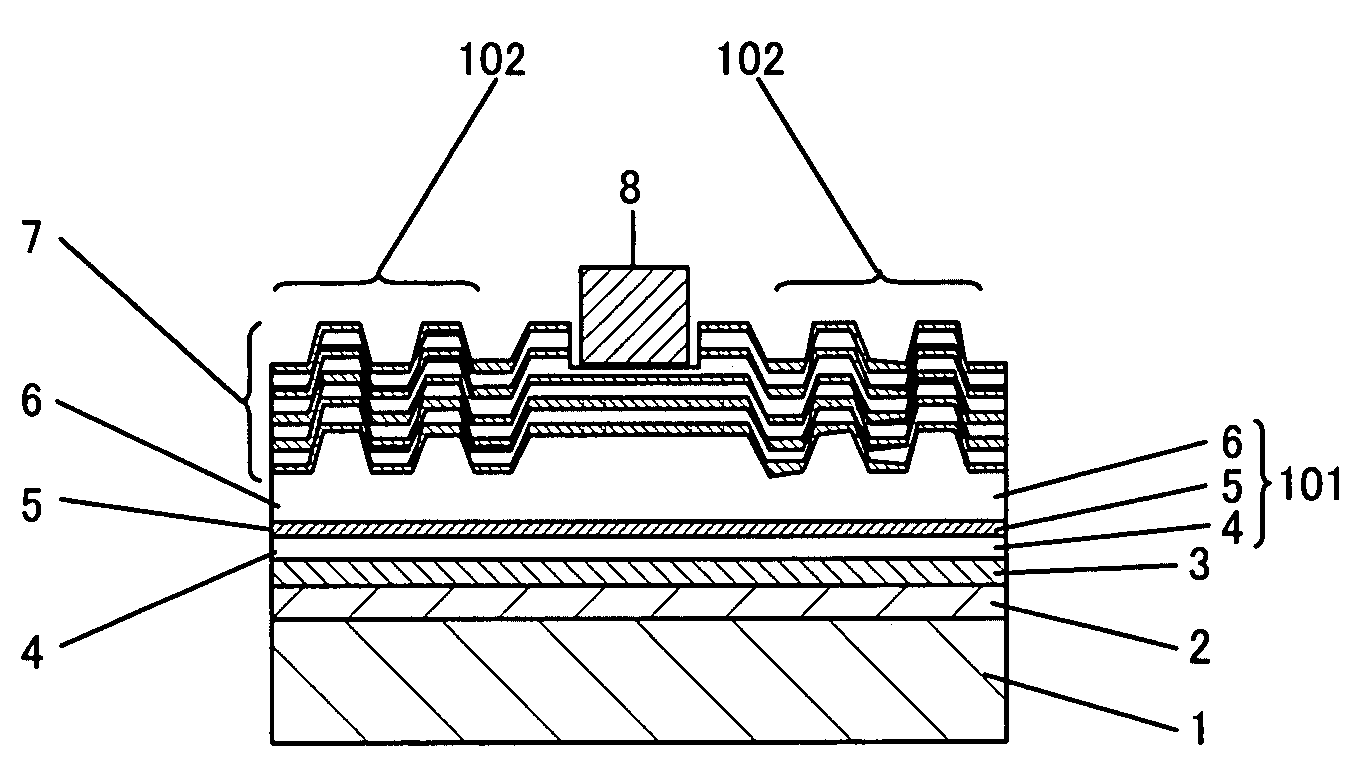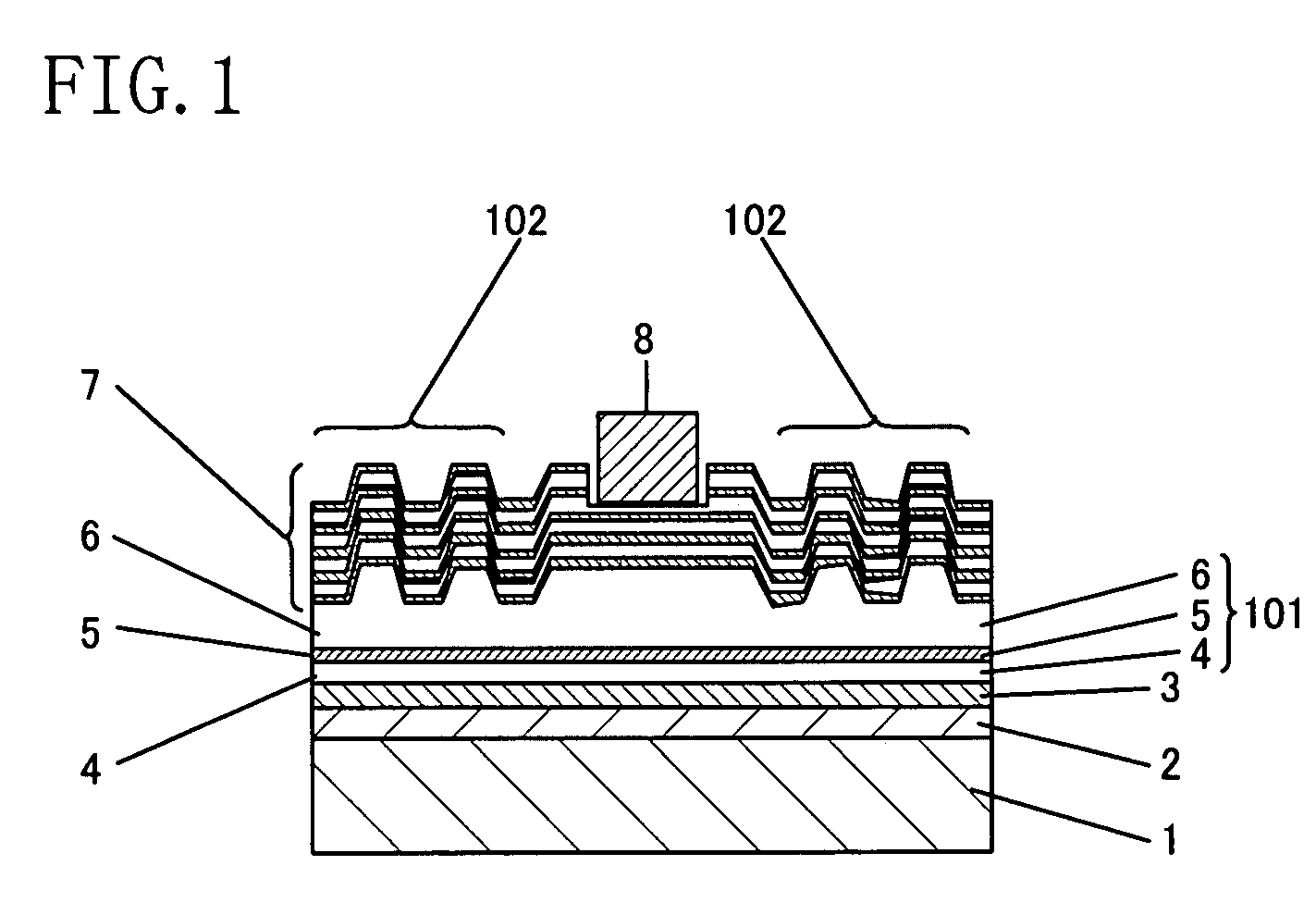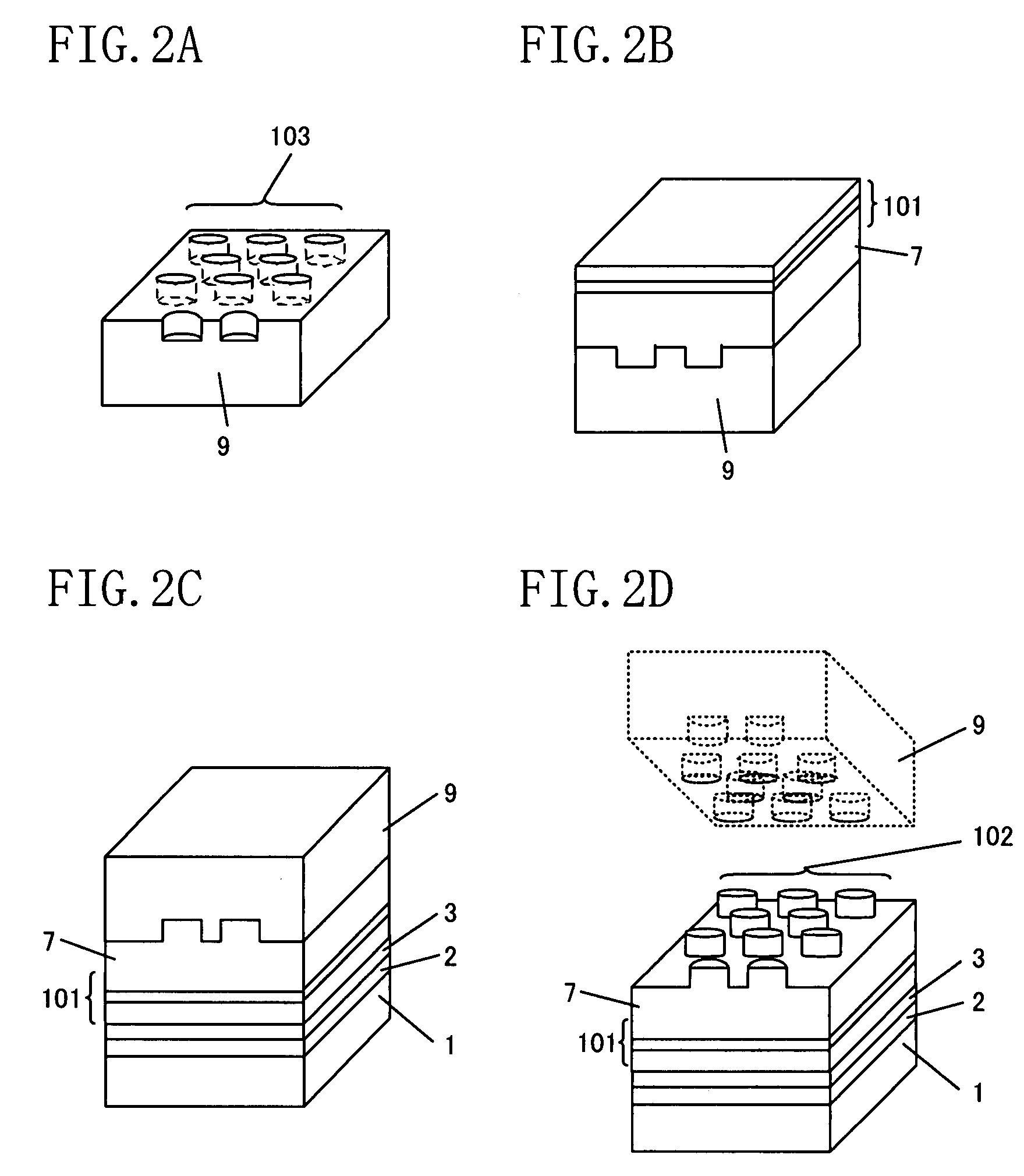Semiconductor device and method for fabricating the same
- Summary
- Abstract
- Description
- Claims
- Application Information
AI Technical Summary
Benefits of technology
Problems solved by technology
Method used
Image
Examples
embodiment 1
[0029]Embodiment 1 of the invention will now be described with reference to the accompanying drawings. FIG. 1 shows the cross-sectional structure of a semiconductor device according to Embodiment 1. As shown in FIG. 1, the semiconductor device of this embodiment is an LED. In the semiconductor device, a semiconductor multilayer 101 is bonded to a holding substrate 1 made of Si with a solder layer 2 and a P electrode 3, that is, a reflection electrode, sandwiched therebetween. A semiconductor superlattice layer 7 is formed on the semiconductor multilayer 101.
[0030]The solder layer 2 is preferably made of a material easily fused between metals, such as lead (Pb), tin (Sn), indium (In) or gold (Au). In this embodiment, a solder material utilizing eutectic of Sn and Au is used. As the P electrode 3 of this embodiment, a multilayered film of palladium (Pd), platinum (Pt) and gold (Au) is used. In this case, reflectance of light of a wavelength of 450 nm entering the interface between GaN...
embodiment 2
[0056]Embodiment 2 of the invention will now be described with reference to the accompanying drawing. FIG. 10 is a cross-sectional view of a semiconductor device according to Embodiment 2. As shown in FIG. 10, the semiconductor device of this embodiment is a semiconductor laser diode. In this semiconductor device, a semiconductor superlattice layer 7 and a semiconductor multilayer 101 are successively formed on a crystal growing substrate 9 of n-type Si.
[0057]The crystal growing substrate 9 has a one-dimensional periodic structure in the form of periodically formed recesses. As the one-dimensional periodic structure, recesses with a depth of 5 μm may be formed, for example. In the semiconductor device of this embodiment, there is no need to form a photonic crystal by a semiconductor superlattice layer 7. When the width at the inclined part (a step portion 41) of each recess is set equal to or larger than a part serving as a waveguide (with a width of approximately 2 μm), such as a r...
embodiment 3
[0062]Embodiment 3 of the invention will now be described with reference to the accompanying drawing. FIG. 11 is a cross-sectional view of a semiconductor device according to Embodiment 3. As shown in FIG. 11, the semiconductor device of this embodiment is a field effect transistor. In this semiconductor device, a semiconductor superlattice layer 7 and a semiconductor multilayer 101 are successively formed on a crystal growing substrate 9 made of n-type Si.
[0063]The crystal growing substrate 9 has a one-dimensional periodic structure in the form of periodically formed recesses. As the one-dimensional periodic structure, recesses with a depth of 200 nm may be formed, for example. In the semiconductor device of this embodiment, there is no need to form a photonic crystal by a semiconductor superlattice layer 7. When the width at the inclined part (a step portion 41) of each recess is set equal to or larger than the gate length (approximately 0.1 to 1 μm) in the field effect transistor...
PUM
 Login to View More
Login to View More Abstract
Description
Claims
Application Information
 Login to View More
Login to View More - R&D
- Intellectual Property
- Life Sciences
- Materials
- Tech Scout
- Unparalleled Data Quality
- Higher Quality Content
- 60% Fewer Hallucinations
Browse by: Latest US Patents, China's latest patents, Technical Efficacy Thesaurus, Application Domain, Technology Topic, Popular Technical Reports.
© 2025 PatSnap. All rights reserved.Legal|Privacy policy|Modern Slavery Act Transparency Statement|Sitemap|About US| Contact US: help@patsnap.com



